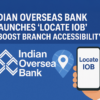Capgemini Research Institute’s World Payments Report 2025 highlights the era of account-to-account and instant payments:

Capgemini Research Institute’s World Payments Report 2025 highlights the advent of a financial services industry ‘reimagined with account-to-account and instant payments’. It says non-cash transaction volumes globally rose to 1411 billion in 2023 and are expected to touch 1650 billion in 2024. And by 2028, the number could be a phenomenal 2838 billion. The report also predicts that instant payments will account for 22% of all non-cash transaction volumes by 2028 globally.
The report says Account-to-Account (A2A) instant payment solutions are becoming a faster and cost-effective way to pay and this is fast replacing expensive card networks. “The rise in their popularity may threaten to challenge the dominance of traditional payment cards, with estimates suggesting they could offset 15-25% of future card transaction volume growth,” the report states.
APAC SHINES
The report highlights that Asia-Pac region is one of the fastest growing regions for non-cash transactions with a 20% YoY increase in 2024 compared to Europe (16%) and North America (6%). “The region is leading the instant payments charge in terms of volume growth, with instant payments accounting for 26% of the payment mix in 2023. B2B payments are catching up with the digital trend, and APAC is leading the charge in global B2B non-cash payments with 14% YoY growth projected for 2024, compared to Europe (11.6%) and North America (7%), the report says.
The report, however, cautions that as instant payments surge, banks in APAC remain underprepared with a mature technological infrastructure to support this growth, with only 30% of banks in the region confident of claiming a strong technological foundation for instant payments.
INSTANT PAYMENTS CRUCIAL
Capgemini said its study found that 2-in-3 payment executives viewed the expansion of instant payments as vital to drive non-cash transactions. “Consequently, banks need to jump on the instant payment adoption wave; however, concerns about fraud – echoed by the majority of payment executives in the report – deter much progress. With banks lacking robust defences, and the potential for liquidity concerns, many opt to receive but not send instant payments,” states Capgemini in the report.
It cautions that today, based on the survey, only 25% of banks can receive instant payments and 53% are fully capable of sending and receiving them.
OPEN FINANCE IS KEY
The report discusses how open finance empowers consumers and businesses, catalyzing the adoption of instant payments. It, however, says despite its immense potential to reshape the financial landscape, progress is currently limited due to differences in regulatory frameworks and market initiatives. It cites South Korea, Singapore, Australia and India as leading in open finance initiatives in the region.
The report talks about South Korea’s MyData system that standardizes data-sharing mechanisms, including regulator-defined use cases in accounts, payments and lending.
Singapore’s open finance strategy, according to the report, prioritizes market-driven growth, with the Monetary Authority of Singapore playing an essential role in the open banking process.
As regards India, the report states its Account Aggregator (AA) system, introduced by the Reserve Bank of India in 2021, has user consent at its core, and allows banks, pension funds, insurance provider and investment firms to pool customer data and this vast trove of diverse information empowers third-party developers to create innovative new financial products and services.
In Australia, says the report, the Consumer Data Rights (CDR) regulation, introduced in 2017, gives consumers greater access and control over their data. The legislation’s scope was beyond just payments data and covered other sectors like utilities to encourage competition, it says.
The report emphasizes that the future of payments lies in adapting to customer segment needs and emerging trends. “A combined instant payment and open finance API strategy can empower financial institutions to unlock the full potential of instant payments. The flexibility to handle all transaction types – payments and API calls – is essential to deliver the value-added services that drive ROI by moving beyond basic transfer functions,” it says.
The report adds that by integrating instant payments with industry-specific open finance use cases, banks can create fertile ground for revenue generation in retail, insurance, automotive, and beyond.
A survey of payment executives carried out as part of the study showed that customer-facing instant payment use cases are a top priority (mentioned by 52% of executives), followed by corporate instant payment use cases (31%), and embedded B2B2x instant payment use cases (18%).
SOME CONSTRAINTS
The report maintains that financial institutions are finding it challenging to fully embrace open finance due to issues with non-standardized APIs, limited control over data use and a lack of incentives to share data with third parties. Only 17% of banks are at an advanced stage, says the report, piloting or launching open finance products, while 39% are in the planning phase, conducting impact assessments. Another 23% of banks remain hesitant as they await regulatory clarity.
Recent Articles:
Business Transformation – Navigating with Hybrid Intelligence









